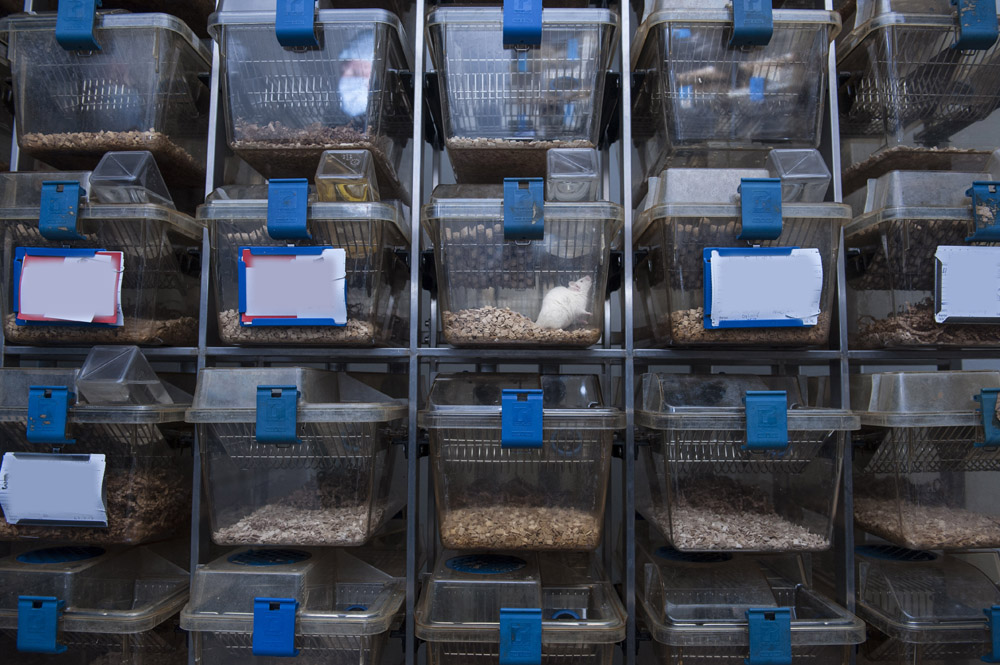More data, fewer individual tests on animals. That’s the idea behind GronSAI, the new scanning facility at the Central Animal Facility (CAF) at the UMCG.
The ‘Groningen Small Animal Imaging’ facility consists of five devices together in one part of the building. Two of them are new: a miniature MRI scanner and a combination PET-MRI scanner. The UMCG already had the other three devices, but they were scattered around the building.
The devices show various types of tissue; one is for brain scans, while another shows muscle tissue. ‘Being able to combine these different scans gives people various puzzle pieces to connect rather than just a single one’, says Catriene Thuring, deputy director at the CAF.
Good for animals
This efficiency benefits not only the researchers at the CAF, but also the animals. Simply stuffing them in a box and carrying them from one scanner to another one elsewhere in the building ‘isn’t taking proper care of the animals’, says Thuring. ‘We don’t do that.’
In order for researchers to get good images, the animals have to stay still. ‘But you can’t tell an animal to stay still like you would a person.’ As such, the animals are sedated, but they’re only under for a limited time.
If you want to perform multiple scans, you’d have to let them wake up, care for them, move them, and sedate them again, Thuring explains. ‘That’s very taxing for these animals. A light anaesthetic may not sound like much, but it is.’ Animals can’t be sedated without good reason.
No other way
Thuring isn’t sure how many individual tests are eliminated with the new facility. ‘We’re always striving for fewer tests.’ Experiments are only carried out if there is absolutely no other way to gain the necessary data, she says.
‘Right now, we’re at the point where we’re looking for smart solutions to decrease the number of tests. And I’ll tell you: it wasn’t easy to get here.’
One issue was the cost, says Thuring. ‘This was a seven-figure solution’, she reveals. The equipment used is innovative and involves a lot of safety precautions due to the radiation they emit.
Covid
Over the past few years, the number of individual animal tests at the CAF has varied. In 2017, it was 18,133, two years later it was 18,731. Last year, the number dropped to 16,473. There are several reasons for this drop, the annual report stated: from research on larval fish, which aren’t considered animals, to the Covid restrictions, which prevented people from going to work.
The CAF is mainly involved in research on age-related illnesses such as cancer, Alzheimer’s, and Parkinson’s, as well as cardiovascular disease and hereditary conditions.




